
We increasingly design and inhabit spaces occupied and navigated by both humans and autonomous machines, each with their own unique methods of seeing and sense-making. In this gap between human and machine perception opens a new frontier: how does machine learning transform the vision of the designer?
For example, machine learning can organize vast sets of visual information according to qualitative categories and design needs. As a design office, a key dimension of our research concerns coordinating ecologies of both people and machines, and augmenting, hacking, and otherwise confronting human perception and heuristics with machine vision and intelligence. This sea change in how we use machines could usher in significant new opportunities for the way designers marshal information, precedent, resources, and context for design.
how we use machines could usher in significant new opportunities for the way designers marshal information, precedent, resources, and context for design
Let’s consider a concrete example. Perceptually, one of the most atomic formal categories is the simple and elemental silhouette. Historically, the silhouette was a means of early portraiture thought to reveal fundamental characteristics of the human soul. The silhouette is also a way of essentializing the formal structure of objects that we see, and one of the roots of our understanding of shape.
We have developed machine vision tools for scanning, classifying, and mapping large databases of silhouettes, which can then create emergent family trees of these forms. These phylogenetic trees also become algorithmic search trees, allowing designers to search for building forms as easily as Google searches text. Let’s take a look at some ways such a tool could transform design.
Mine The Scrap
A silhouette machine can scan objects from the most intricate to the most mundane. Consider, for example, scrap. Construction waste constitutes over 30% of U.S. American landfills by volume. Yet much of this scrap is only partially damaged and could be reimagined for reuse with adaptable and scalable pattern-recognition tools. Mine the Scrap is a data driven process that designs new structures algorithmically generated from existing scrap. By combining the conceptual logic of the quilt with the customized shape and pattern detection used in self-driving cars and face-recognition, Mine the Scrap uses big data to tackle big waste.
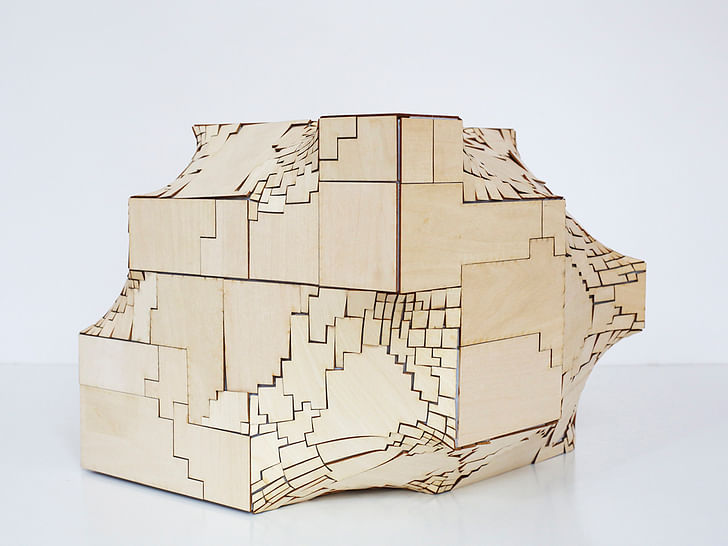
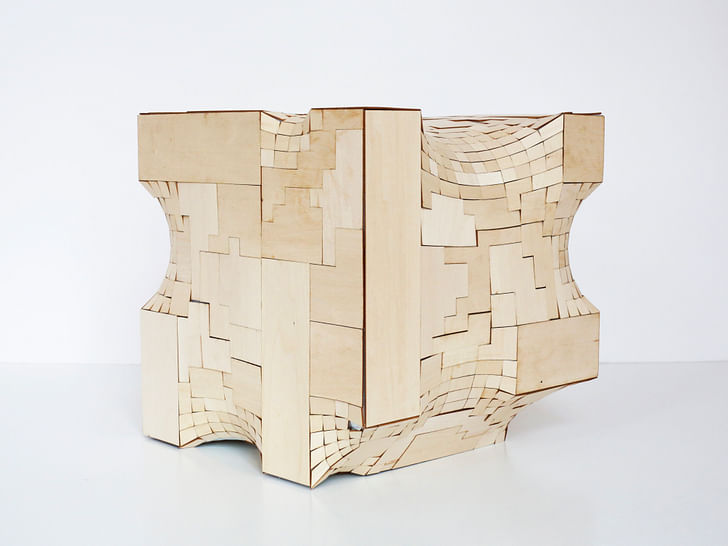
After scanning the silhouettes of sheet-material scrap, we use a 40-dimensional set of shape-similarity metrics to produce a dense waste ‘family tree’. This tree is unfolded into intricate form maps with which we can match what we have to what we want. An initial target design is iteratively adapted and optimized to create a structure that is informed by both the designer’s intent and the constraints of the scrap material itself. The scrap silhouettes become a series of puzzle pieces in a constantly adjusting aggregation assembled by the machine. In this way, each specific set of silhouettes is given extra dimension to become their volumetric equivalent. This logic was encapsulated into a ‘field’ version of the tool, which allows the user to scan materials on site and instantly view and assemble the inherent structure in a stock of scrap pieces.
Of course, buildings themselves have silhouettes, which are the kind of evolutionary intersection between extrinsic context and intrinsic design demands. By programming vision-enabled bots to scan and synthesize immense collections of figure-ground shapes and building plans, we can apply data-science techniques to make explicit the formal associations and affinities across the entire corpus of existing buildings. We could systematically and objectively classify the universe of existing architectural form into a kind of phylogenic tree of shape. Our form-maps do exactly that: they restructure buildings in a cartogram that shows relative similarity, clustered affinity, and overall categorical distribution of form. Recalling Colin Rowe’s work in creating metric associations to classify typology in essays like the “Mathematics of the Ideal Villa”, we affectionately call this tool the RoweBot.

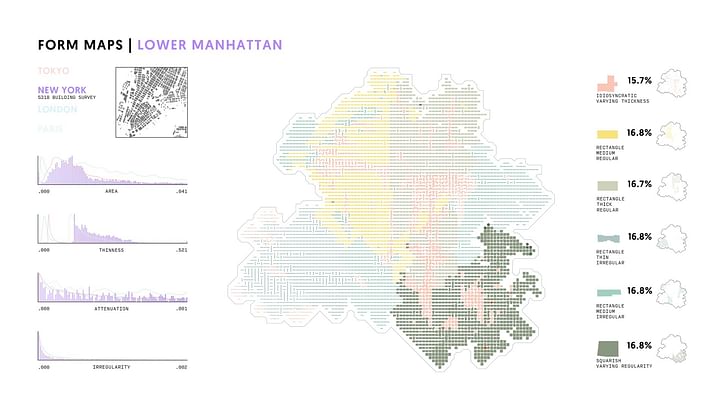
Of course the cataloging of architecture has a deep and variegated history. From the early usage of typology as an ideal model to the exhaustive a priori catalogs by Jean-Nicolas-Louis Durand, the field is no stranger to categorization. This tool represents a new method of sensemaking, which builds on these ideals with the unique capabilities of the machine and scales them up dramatically. With this tool, the designer can create a catalog based on the empirical ethnography of the existing billion buildings, as opposed to the necessary a priori assumptions of the past.
we can create applications which allow us to simply draw a building and find all of the versions of that plan in a city, in a country, on the planet
Now that the machine intelligence for sorting and searching buildings is developed, we can create applications which allow us to simply draw a building and find all of the versions of that plan in a city, in a country, on the planet. It is a completely comprehensive and exhaustive way to think about precedent.
Conversely, we are fascinated by how perceptual constructions can catalyze design processes. We are drawn to historical methods of vision augmentation that can be considered freshly today, as a way of extending representation and experience simultaneously. Let’s take the enfilade and the panorama: that is, the hyperfocal perspective and the non-focal ‘gods’ eye’ view. Named for the military formation of single-file soldiers, the enfilade is an arrangement of sequential and nested doorways. A common object of fascination for Dutch masters such as Samuel van Hoogstraten or Pieter de Hooch, its result is a kind of serial perspective with quite arresting light qualities. The panorama, on the other hand, is compelling not only because of the architecture it generates, but also the drawings necessary to decode these panoptic experiences: specialized maps and keys to navigate these singular spaces.
What would the child-space of these diametrically distinct experiences be? We asked whether the seriality of these enfilade chambers could become a theatre of dramatic difference, a kind of liquid space in opposition to the more classical regimentation. So our panoramic / enfilade creates an exceedingly long corridor—maybe an infinite corridor—a menagerie of spatial effects which are consequences not of animation but of the simple movement of the observer through the space.

We have spatialized a kind of deconstruction of this hypercorridor as our proposal for a Glacier Observatory. The Observatory is both optical and aural: it exists as a network of long-wavelength acoustic lenses which collectively watch the cracking, groaning, shearing sounds of melting ice, and as a series of viewfinders for the ice field. The serialized planes of the acoustic lenses channel the sound in specific directions, and recall the layered shear planes of the ice itself.
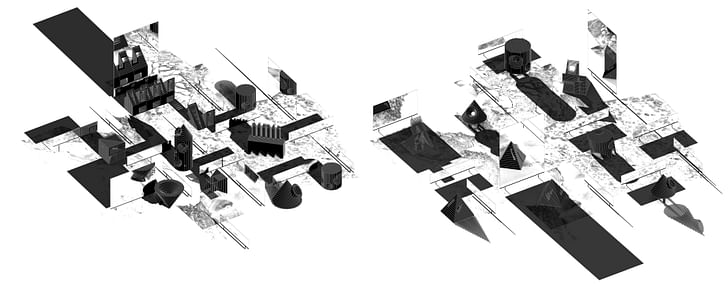
Enfilade Knot Spaces
In its most common appearance the enfilade is a series of frames, and these frames are canonically nested within one another, a mille feuille of discrete sheets and surgical perforations. But if the frames themselves are displaced, and thus overlap and intersect, they induce not a series of planes but a continuously twisting set of surfaces that span between these interlocking frames. This transformed set of surfaces still retains the projective properties of the enfilade, its alignments of aperture and opacity. We can thus use these distortions of the enfilade as generative armatures in their own right for new but rigorously and genetically related projective spaces.
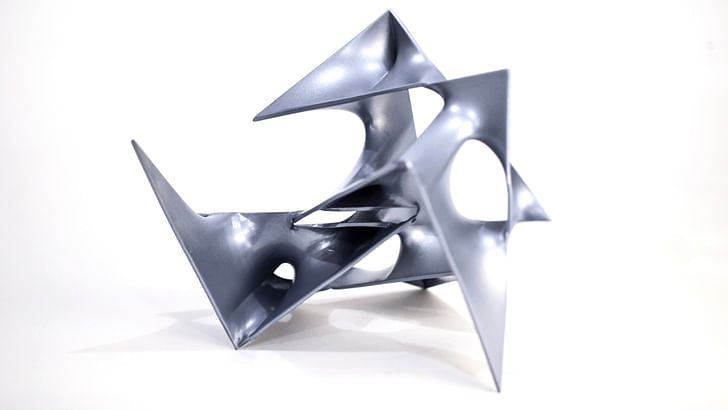
Vision with New Lenses
Vision is an irreducible element of design, and we are in the midst of a reconfiguration of the parameters of seeing unlike any since the nineteenth century. The experiences of seeing, and thus knowing, architecture is increasingly augmented and filtered by new technologies to understand not specific buildings but the whole body of architecture. With this reconfiguration comes a new, expanded scope of design: to create not only the products of vision, but the mechanisms of vision itself.

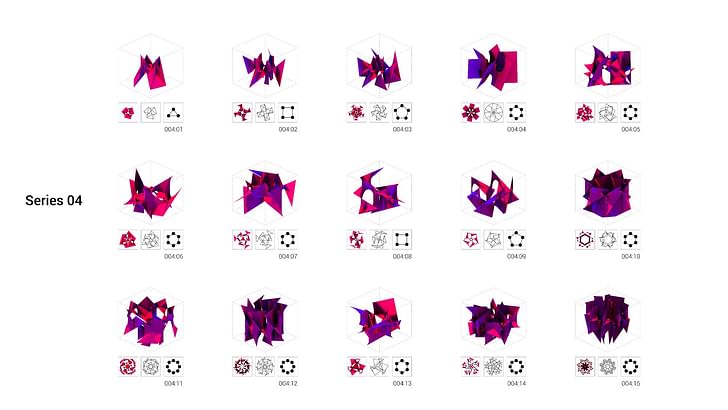
Certain Measures is a hypothesis-driven design practice that brings deeper insight to the design of experiences, systems, and spaces using mathematics, new technologies, refined intuition, and restless curiosity. Certain Measures is: Andrew Witt, Tobias Nolte, Michael Degen, Jason Tucker, James Yamada, Claire Kuang, Olivia Heung, and Cody Glen.
1 Comment
increasing automation will just make it harder for us to keep and find jobs
Block this user
Are you sure you want to block this user and hide all related comments throughout the site?
Archinect
This is your first comment on Archinect. Your comment will be visible once approved.